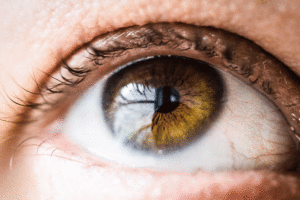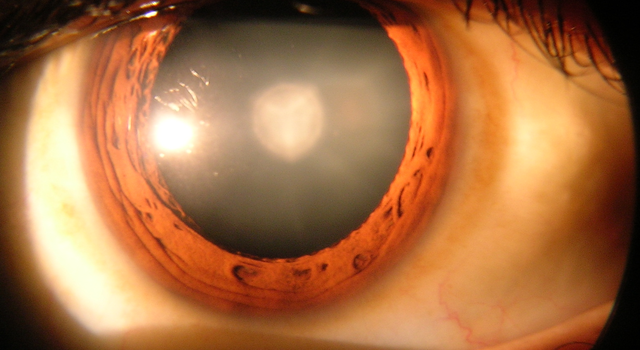Cataracts – the most common cause of blindness
What are cataracts? Is your vision cloudy when you’re watching television? Are your eyes sensitive to light and glare? Does sunlight or indoor lighting seem too bright? When you’re driving, do oncoming headlights have a “halo” around them? Do colours seem faded or are you having trouble differentiating between certain colours?
If you have any of these symptoms, it is possible you have cataracts on your eyes.
You’re not alone. This eye disease is the leading cause of blindness worldwide.
5,000 out of 100,000 people aged 52–62 are affected by cataracts.
46% of people aged 75–85 have significant vision loss due to cataracts.
Cataracts and your eye
 A cataract is a clouding of the eye’s lens that causes a progressive, painless loss of vision.
A cataract is a clouding of the eye’s lens that causes a progressive, painless loss of vision.
Light is crucial for vision. It bounces off objects and enters your eyes, which allows you to see.
In a normal eye, light enters and passes through the lens. Your eye is like a camera and uses a lens to focus.
This lens of your eye is made up mostly of water and protein, arranged in a precise pattern to let light pass through. Colours are vibrant, images are clear, and the eyes are able to adjust to changes in lighting.
Normally, the lens at the front of your eye is clear. But as we age, some of the protein may clump together and start to cloud a small area of the lens. This cloudy or blurry spot is a cataract which affects the way you take in light and blurs your vision. Halos are a common symptom. Glare might make you think that lights are too bright. People, objects, and colours can look hazy, cloudy, and “washed out.” The lack of detail makes it difficult to tell the time, read, watch television, see food on a plate and judge distances accurately due to problems with depth perception.
Some people with cataracts describe life as being similar to looking through a window hazed and streaked with dirt.
What causes cataracts?
Although the exact cause of cataracts remains a mystery, many experts believe there are a number of contributing factors, such as age, illness, injury, or certain medications. Cataracts seem to be more common when age is coupled with:
- Malnutrition or poor eating habits
- Exposure to certain drugs for long periods
- Exposure to ultraviolet light over long periods
- Alcohol use
- Injury to the eye (cataracts can develop many years after an injury)
- Family history of cataracts
Changes over time
They start small and initially things might just seem a little hazy. But as cataracts grow bigger they darken with a yellow or brown tinge, clouding more of the eye lens and distorting the light passing through. If not treated, cataracts may lead to a complete loss of vision.
Treatment for cataracts
Surgery is more than 95 percent successful in restoring the vision of people who have age-related cataracts and no other eye disease.
Although surgery is the only remedy, it is almost never an emergency.
Worried? See our Auckland optometrists!
If you find yourself frequently needing stronger glasses or contacts, you may have cataracts. See our Auckland optometrists if your eyesight is rapidly changing.
You may well have cataract-like symptoms, but those symptoms may also be a sign of another eye-related problem. It is always a good idea to see an optometrist if you are experiencing any changes in your vision.
We can give you a thorough eye check. If caught early, eye conditions can often be corrected.
To get all your questions answers call 09 522 1283 to speak to our Newmarket optometrists. To speak to an optometrist in Henderson call 09 836 1731.

